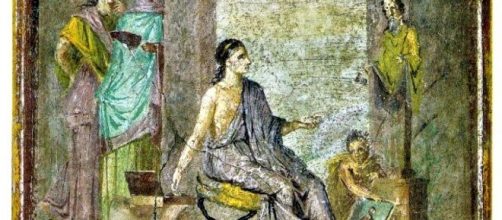There ought to be a law banning female-only art shows. Silliness has entered the exhibit hall. Besides pushing back against gender bias in history, the word history has been feminized into “herstory” with its own spelling – HerStory.
HerStory is the name of art shows that rear their indignant heads every year. And they’ll continue to do that says HerStory founder Rene Phillips, “until there is a fair and equal balance of women artists.”
Great expectations
Is she serious? It’s not only bias in museums and galleries that she’s after. In a statement on the Manhattan Arts website, Phillips also means bias in books, auction houses, private and public collections, and the media.
In short, HerStory will quit its annual shows when pigs grow wings.
If only activists like Phillips would see women-only art shows as they are – caught in quicksand, sinking the gender divide deeper and deeper.
But wait, there’s a current exhibit that pays attention to female artists in a meaningful way. Consider the wall paintings excavated from Pompeii, once buried by the eruption of Mt. Vesuvius in 79 CE.
An exhibition of 35 detached frescoes at the Institute for the Study of the Ancient World at New York University, offers a revealing look at the studio practices of Old Rome’s female painters.
One painting, in particular, "Painter at Work," warrants attention. It’s important to point out that ancient Rome didn’t hold artists in high regard – male or female – believing them inferior to the ancient Greek painters.
So said Pliny the Elder.
Old Rome’s painters, then, were relegated to decorating houses. Yet, if you look closely at "Painter at Work" you’ll see that it’s a lot more than a domestic embellishment.
Because the Painter at Work artist (presumably female), is treated like a house painter rather than an artist, she appears to steer viewers’ attention to how really good an artist she is.
What you see is a female painter at her easel studying her model – a polychrome statue of the god Dionysus. Particularly notable is her decision to render the statue without the pedestal, as if to demonstrate her skill at making Dionysus look like a live model rather than a statue.
Painter at Work, reportedly taken from the House of the Surgeon, demonstrates a skilled artist at work.
And I can’t help wondering if the doctor of the house ever saw the painting beyond adornment.
In a report on NYU’s exhibit, curator Roko Rumora noted in Art in America that while there’s no evidence of the existence of female painters in ancient Rome, “these representations help us undo some of the default genderings of all ancient painting as men’s work.”
To hear Rumora tell it, such “gendering” is everywhere in scholarship about Pompeii, even to whose house “Painter at Work” was found. The owner is assumed to be a wealthy (male) surgeon.
You call this scholarship?
“This male-centered interpretation,” Rumoro continues, “reflects some of archaeology’s long-standing biases.” Archaeologist Penelope Allison backs her up, saying that Old Rome studies were “dominated by concern for the representation of masculine power.”
Unlike HerStory shows, this one at NYU can change the way history is written.


